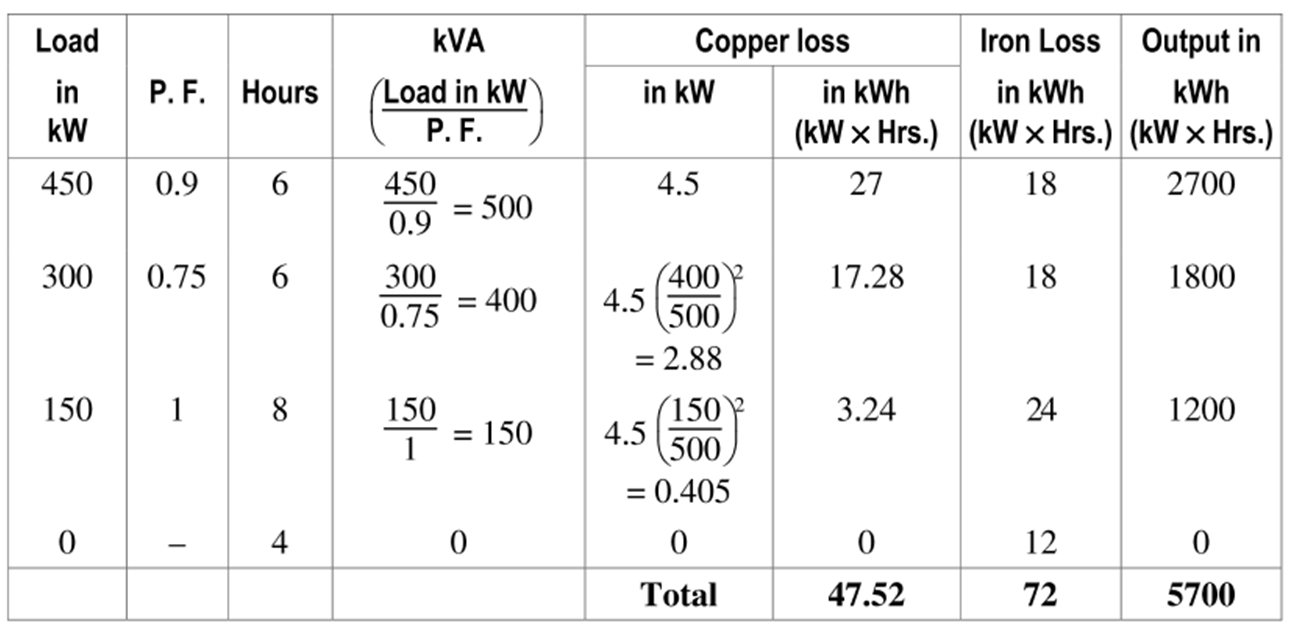In this topic, you study All Day Efficiency of a Transformer.
Distribution transformers (i.e. the transformers supplying lighting and domestic loads and general electrical networks) have their primaries permanently connected to the power lines to give service to the consumers for 24 hours a day. Hence, in the case of these transformers, iron loss which is of constant magnitude occurs throughout 24 hours of the day irrespective of whether there is load on the transformer or not. On the other hand, since these transformers operate at different loads during different hours of the day, they have changing copper loss depending upon the load. The performance of a transformer under these conditions is best judged by its efficiency computed on energy basis. This efficiency is known as all-day efficiency or operational efficiency. It is defined as the ratio of energy output (in kWh) over a period of 24 hours to the energy input (in kWh) over the same period. Thus,
$\text{All-day efficiency}$
\[\text{= }\frac{\text{Energy output}\left( \text{in kWh} \right)\text{over 24 hours}}{\text{Energy input}\left( \text{in kWh} \right)\text{over 24 hours}}\text{ }\times \text{ 100}\]
The All-day efficiency calculated in Per cent. When a transformer is to be selected for the distribution purposes, one having a higher all-day efficiency should be always preferred.
Example 1:
Find the all-day efficiency of a 500 kVA distribution transformer whose copper and iron losses at full load are 4.5 kW and 3 kW respectively. During a day of 24 hours, it is loaded as under:

Solution: Since the transformer is energised throughout the day, iron loss of 3 kW will occur for 24 hours irrespective of load condition. The copper loss at full load is given as 4.5 kW. Copper loss at any other load will be proportional to the square of the load current or kVA. For calculating the all-day efficiency of a transformer under consideration, all the calculations involved are made in the tabular form given below (Table 1).
Table 1
